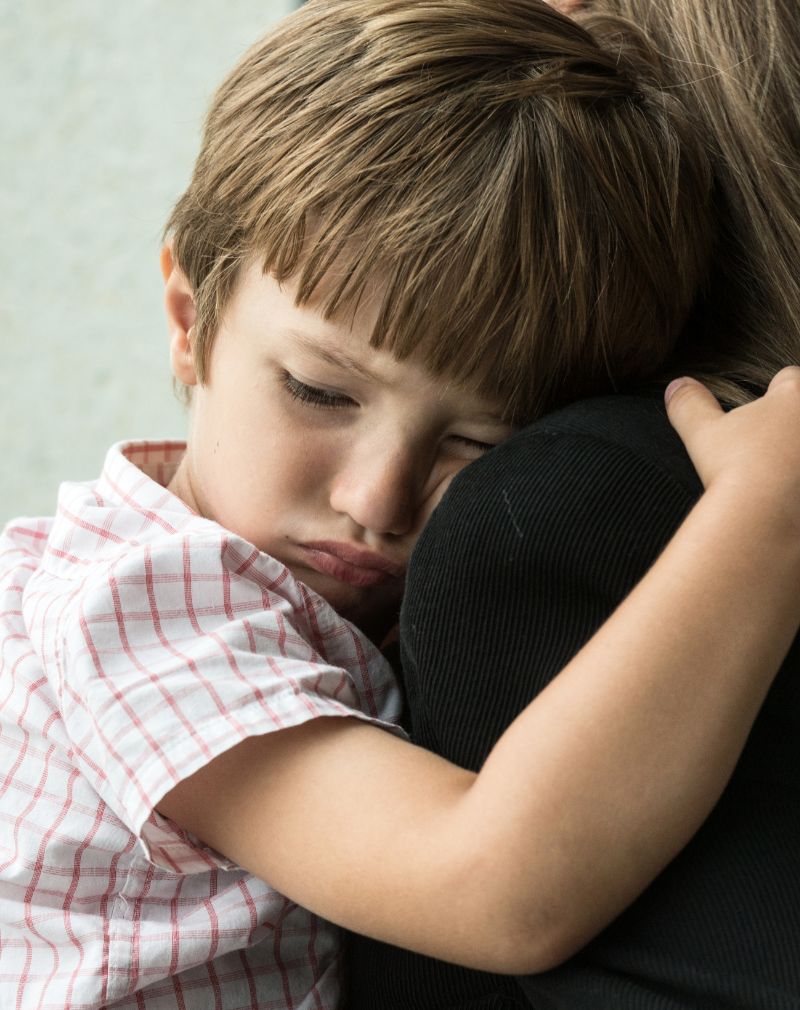Protecting our children is a top priority for every parent and caregiver. One crucial aspect of this protection is educating our children about their bodies and the importance of setting personal boundaries. Teaching children the difference between good and bad touch empowers them to identify inappropriate behaviors, recognize when something isn’t right, and know how to seek help.
Ms. Hina Ayesha, a Clinical Psychologist at the American Wellness Center in Dubai Healthcare City, shares her valuable insights and provides essential guidance on how to navigate this sensitive yet important topic with children.
Understanding Good Touch vs. Bad Touch
Let’s start by defining good touch and bad touch in a way that children can easily understand:
- Good Touch: Good touches make us feel happy, safe, and loved. Examples include hugs from family members, high-fives from friends, a gentle pat on the back, or a comforting hand on the shoulder.
- Bad Touch: Bad touches make us feel uncomfortable, scared, confused, or even hurt. Examples include unwanted tickling, hitting, pinching, or any touch on private body parts that makes us feel uneasy.
Ms. Hina Ayesha, Clinical Psychologist at American Wellness Center, talks about teaching children the difference between “good touch” and “bad touch.” It’s vital for empowering them to understand their bodies and set personal boundaries. A “good touch” includes positive interactions like handshakes, hugs, and high-fives, making children feel happy and supported. A “bad touch” is any contact that makes them feel uncomfortable or is unwanted, such as hitting or unwanted physical gestures. To help children understand their private areas, use the “swimsuit rule”: parts of the body covered by a swimsuit are private. It’s important to discuss these topics openly and without embarrassment to avoid making children feel ashamed. If discussing this topic feels challenging, consider seeking help from a pediatric psychologist. Together, we can work to protect our children’s safety and well-being.
The Importance of the Swimsuit Rule
A simple and effective way to teach children about private parts is the “swimsuit rule.” Explain to your child that the areas of their body covered by a swimsuit are private. Tell them:
- No one is allowed to touch their private parts except for a parent or doctor who might need to help keep them clean and healthy.
- They shouldn’t touch anyone else’s private parts.
The Power of Open Communication
It’s crucial to create an environment where children feel safe and comfortable talking about their bodies and any experiences that make them uneasy. Here’s how to foster open communication:
- Avoid Shame or Awkwardness: Approach this topic calmly and confidently. If you feel embarrassed or awkward, your child will pick up on these feelings and may be less likely to confide in you.
- Seek Professional Help: If you’re unsure how to initiate this conversation, don’t hesitate to seek guidance from a pediatric psychologist, like Dr. Hina Ayesha. They can provide tailored advice and resources to support your child.
Recognizing Signs of Distress
Sometimes, children may not directly tell you if they’ve experienced inappropriate touch. Look out for these potential changes in behavior that could indicate something is wrong:
- Withdrawal or becoming unusually quiet
- Nightmares or sleep disturbances
- Increased aggression or sudden outbursts
- Unexplained fear of particular people or places
- Changes in eating or toileting habits
Responding with Support: If you notice any of these signs, approach your child with love and reassurance. Let them know you believe them and are there to help. Seek professional support to guide you and your child through this difficult situation.
Empowering Children, Protecting Futures
The ability to differentiate between good and bad touch is an invaluable tool for every child. By teaching our children these concepts, fostering open communication, and being attentive to their needs, we give them the power to protect themselves and the confidence to speak up when something doesn’t feel right. It’s important to remember that these conversations don’t have to happen all at once. Revisit this topic with your child as they grow, adapting your approach to their age and understanding.
If you have further questions, feel concerned about your child’s well-being, or need additional support in navigating these conversations, don’t hesitate to reach out to a qualified professional. Dr. Hina Ayesha and the team at the American Wellness Center in Dubai Healthcare City are dedicated to providing expert care and guidance for children and families.
Let’s work together to safeguard our children’s innocence and well-being. Here’s how you can take action:
- Start the Conversation: Initiate age-appropriate discussions about good touch, bad touch, and body boundaries with your child today.
- Seek Guidance: Contact the American Wellness Center to schedule a consultation with Dr. Hina Ayesha or another pediatric psychologist for personalized support.
- Share This Resource: Help other parents and caregivers by sharing this blog post within your community.
Resources for Learning More About Good Touch and Bad Touch
- The National Sexual Violence Resource Center (NSVRC):Provides comprehensive information, toolkits, and educational materials for parents and professionals.
- Darkness to Light: Offers resources specifically focused on child sexual abuse prevention and provides online training for adults.
- Childhelp USA: A national non-profit dedicated to helping victims of child abuse and neglect. They offer a hotline and online resources.
- Local Resources: Be sure to research organizations within Dubai or the UAE that specialize in child protection and family support services.



